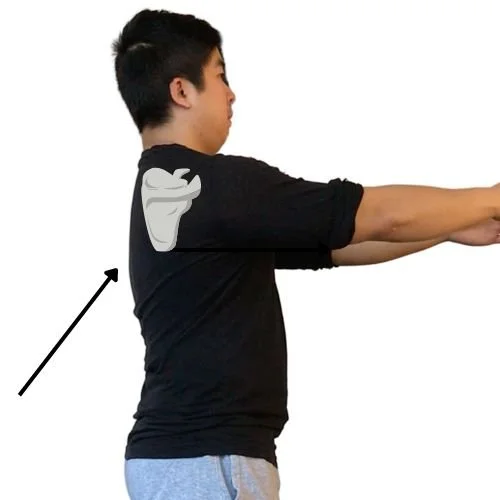Scapular Stabilization Exercises: Strengthening the Muscles and Joints of the Shoulder Blades
Table of Contents
What Is Scapular Stabilization
When we think about moving our arms, the first thing that comes to mind is the shoulder joint. What we often forget is that it's the shoulder joint and the scapula that work together to create the movements of the arm. As a result, if you're looking to increase the strength of your arms, you need to boost the strength of the scapular stabilizers as well, not just the muscles of the shoulder. Having strong scapular stabilizers is crucial for many sports such as Baseball, Tennis, Football, overhead lifting, and any activity that involves the use of the arm.
The scapular stabilizers are the muscles that attach the scapula (or shoulder blade) to the ribcage. They are significant because the scapula can move in all directions and needs to be properly supported. Additionally, the muscles of the rotator cuff also attach to the scapula, further increasing the need for robust scapular stability. The coordinated movement of the scapula and the arm is referred to as Scapulohumeral Rhythm. Maintaining a healthy Scapulohumeral Rhythm is essential for the proper functioning of the shoulder.
Scapular Stabilization Muscles
The primary scapular stabilizer muscles are,
Strengthen Scapular Stabilizers
Often, injuries that occur at the shoulder can be traced back to poor functioning of one of the scapular stabilizers. It's crucial to continually strengthen the scapular stabilizers to promote stability of the shoulder and even prevent impingement. We can fortify our scapular stabilizers by performing various exercises that target this muscle group. Remember, we need to consistently perform these exercises to see improvement—once every two weeks is not enough!
Scapular Stabilization Exercises
There are many exercises we can perform to strengthen our scapular stabilizers. Keep reading below to learn more about each scapular stabilizer exercise.
Stretches to Scapular Stabilizers
While stretching the muscles is always essential, when it comes to the scapular stabilizers the focus should be on strengthening them. If you're trying to stretch the scapular stabilizers because they're sore, you can try various head and neck movements. For example, bringing the ear down to the shoulder or the chin down to the chest will help to stretch out the Trapezius.
To stretch the Rhomboids, clasp both hands together in front of the body. Push your shoulder blades back and away from each other and bend the head forwards. The Levator Scapulae can be stretched by turning the head 45 degrees and looking down into the armpit. Lastly, the Serratus Anterior can be stretched by doing a side bend.
Scapular Stabilizers and the Thoracic Spine
Since the scapula can move in various directions along the ribcage, it's crucial that we perform thoracic spine exercises to promote mobility. If thoracic spine mobility is limited, it impacts the shoulder’s ability to move and can promote Kyphosis.
An exercise that we can do to improve thoracic spine mobility is a Quadruped Thoracic Rotation. This is a bodyweight exercise that aims to improve spinal health and mobility by targeting all of the scapular stabilizers. To learn more about this exercise, including a video demonstration, check out our article on how to perform a Quadruped Thoracic Rotation.
Lower Scapular Stabilizers
If you examine the muscles in our body, the Serratus Anterior, Lower Trapezius and bottom of the Rhomboid Major can be considered the Lower Scapular Stabilizers. We can target each level of our Scapular Stabilizers by performing exercises such as angel wings, which take our arms through a greater range of motion.
Medial Scapular Stabilizers
The Middle Trapezius and Rhomboid can be considered the Medial Scapular Stabilizers. The best way to target the Medial Scapular Stabilizers is by performing exercises such as scapular retraction or external rotation.
Scapular Stabilizers for Glenohumeral Flexion
Remember that both the Scapulothoracic joint and the Glenohumeral joint need to function correctly to produce healthy movement at the shoulder. If the Scapular stabilizers are weak or malfunctioning, dysfunction of the glenohumeral joint can occur, and the risk of injury to the shoulder will increase.
Rotator Cuff Scapular Stabilizers
Some of the muscles of the Rotator Cuff attach to the Scapula and are influenced by its movement. The Supraspinatus, Infraspinatus, Subscapularis and Teres Minor make up the muscles of the Rotator Cuff.
What Muscles are Scapular Stabilizers Acromion
Remember that Trapezius, Serratus Anterior, Levator Scapulae, and the Rhomboids are all scapular stabilizers. The Trapezius and Deltoid attach to the acromion process of the scapula, further exemplifying how the movements of the scapula and shoulder contribute to the movement of the arm.

